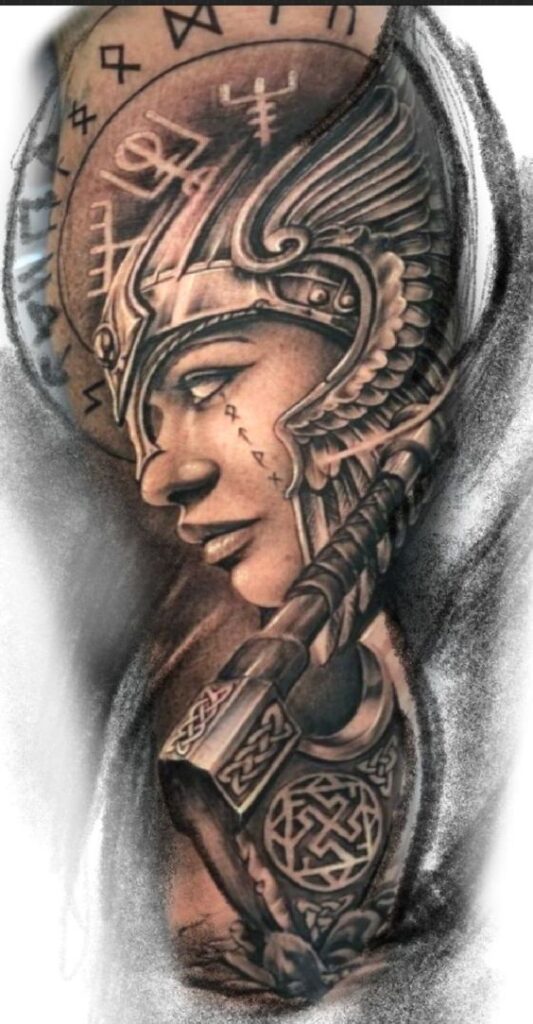
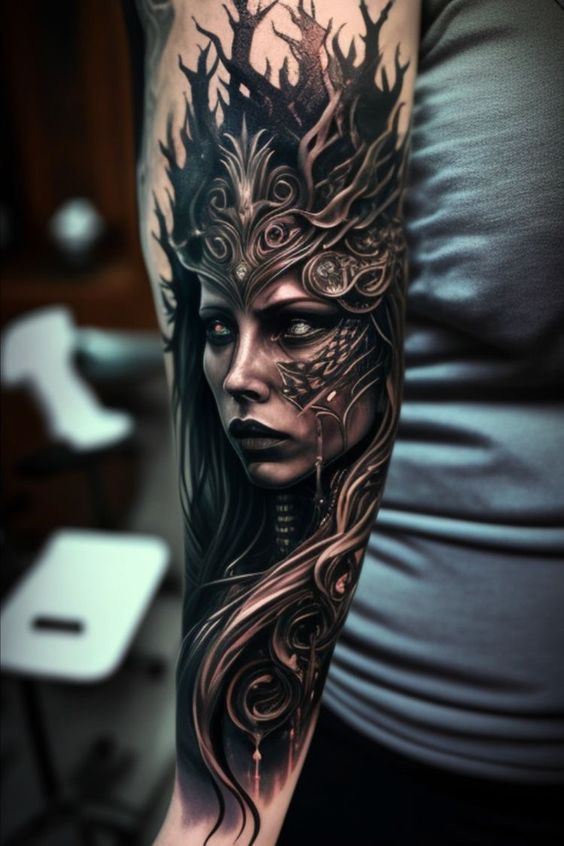
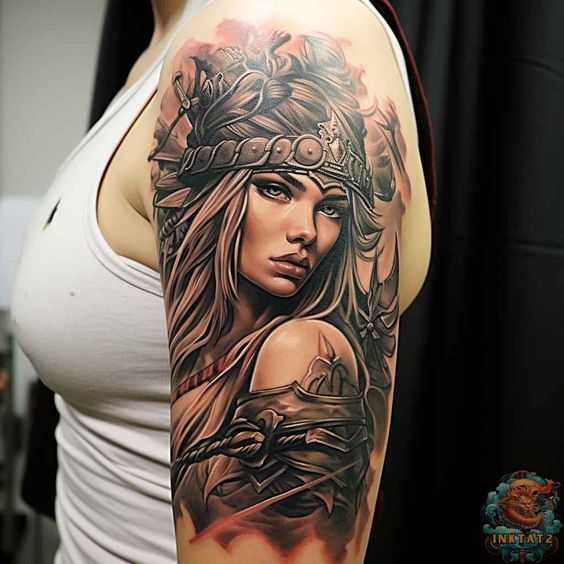
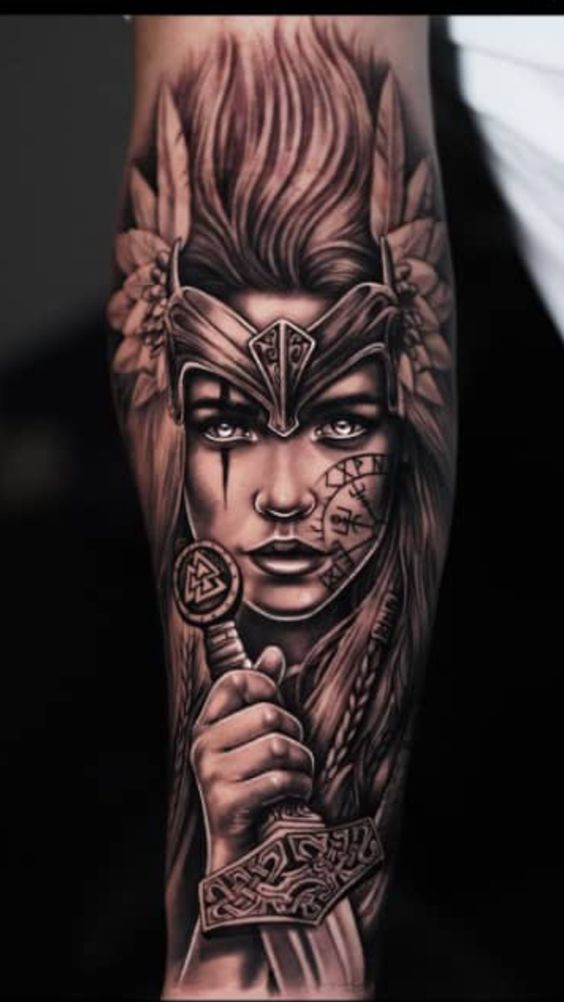
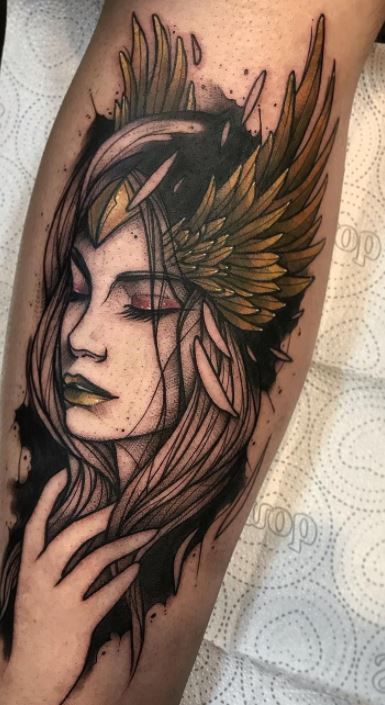
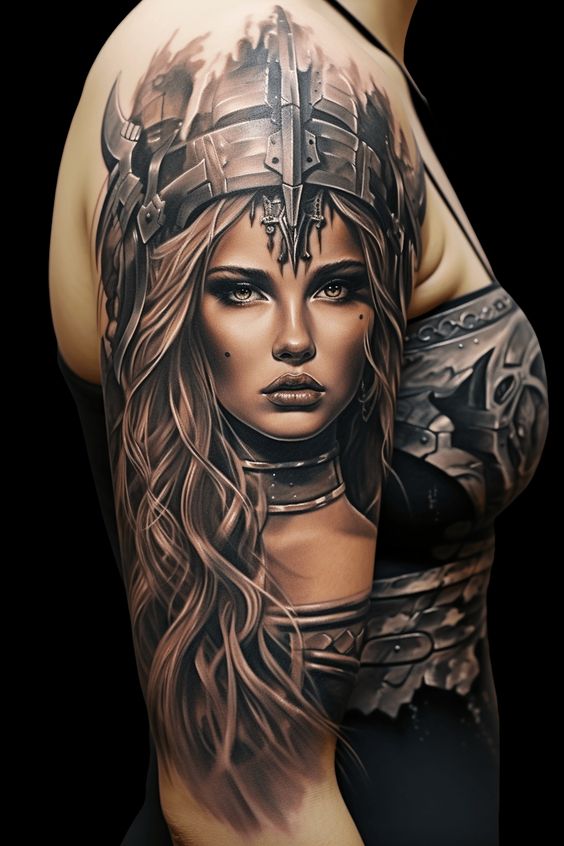

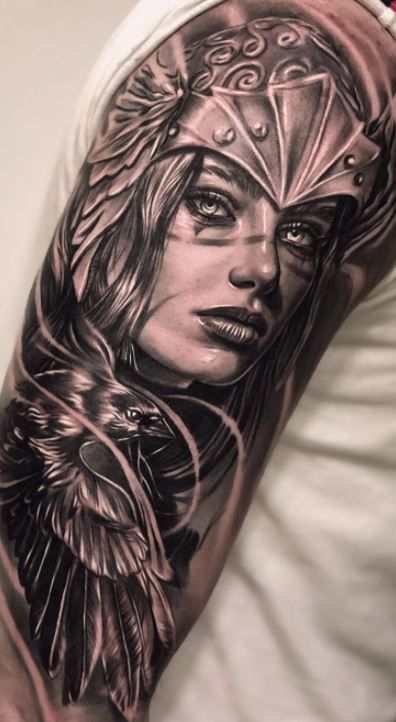
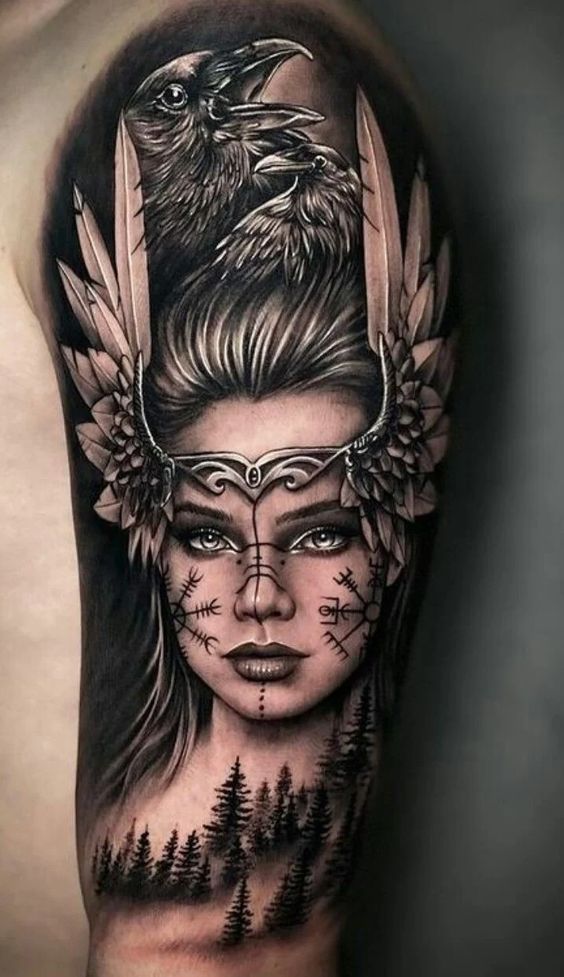
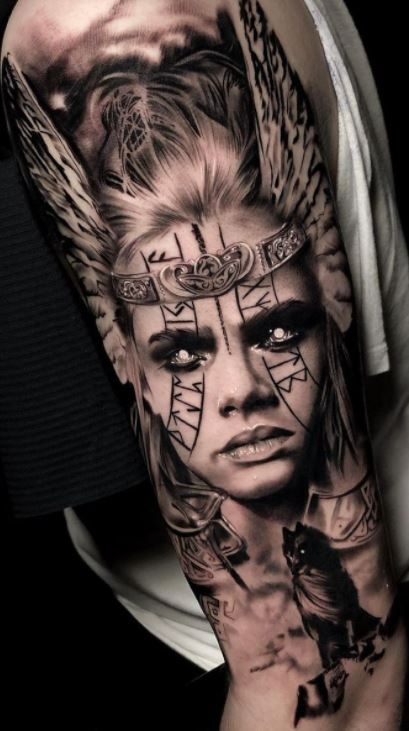
All image credit: Pinterest
Female Viking Tattoo: In the world of tattoo artistry, the symbol of the Viking, traditionally connected with strength, courage, and exploration, has surpassed gender boundaries. Female Viking tattoos have become a powerful choice of body art, catching the nature of both femininity and the indomitable spirit of these legendary seafarers.
In this article, we will talk about the value, design elements, and cultural roots of female Viking tattoos, observing the fusion of strength and beauty in this amazing and empowering art form.
Also See:
The Symbolism of Viking Tattoos
Viking tattoos, profoundly rooted in Norse mythology and history, have long been connected with the fearless warriors of the North. Traditionally, these tattoos were especially masculine, reflecting the rugged and adventurous nature of Viking culture.
However, in recent years, the peak of female Viking tattoos has questioned and redefined these traditional gender boundaries, highlighting that strength and courage are not exclusive to any gender.
Design Elements of Female Viking Tattoos
Viking Symbols: Female Viking tattoos usually include traditional Norse symbols such as the Valknut (a symbol associated with the god Odin), the Mjölnir (Thor’s hammer), or runes symbolizing power, protection, and destiny.
Warrior Women: Representing women as powerful warriors in Viking tattoos is a powerful and empowering option. These designs showcase women illustrated in Viking armor, wielding weapons, and exuding strength and stability.
Nautical Elements: Given the Vikings’ seafaring prowess, female Viking tattoos may include nautical elements such as longships, compass roses, or waves, representing the spirit of exploration and adventure.
Animal Motifs: Animals had great importance in Viking mythology. Wolves, ravens, and dragons are commonly featured in female Viking tattoos, symbolizing companionship, wisdom, and the supernatural.
Intricate Knotwork: Traditional Viking art is represented by intricate knotwork known as “knotwork” or “knot patterns.” These designs, usually woven into the fabric of female Viking tattoos, represent interconnectedness, continuity, and the cyclical nature of life.
Cultural Roots and History
The history of Viking tattoos dates back to ancient times when these seafaring people adorned their bodies with symbols reflecting their beliefs, experiences, and accomplishments. The revival of interest in Norse culture and mythology has fueled the revival of Viking-inspired body art, offering people a unique and culturally rich way to express themselves.
Empowerment and Personal Expression
Female Viking tattoos act as a powerful means of self-expression and empowerment for those who choose to adopt this unique art form. These tattoos challenge traditional gender standards and celebrate the strength, stability, and adventurous spirit that transcends gender boundaries.
For many women, a Viking tattoo becomes a personal narrative, representing their own journey of exploration, overcoming challenges, and welcoming their inner warrior.
Choosing the Right Design
When considering a female Viking tattoo, it’s important to choose a design that resonates personally and holds importance. Whether opting for a small, discreet symbol or a larger, more complex design, the key is to select elements that reflect one’s personal journey, values, and aspirations.
Consulting with a skilled tattoo artist can help bring these ideas to life, providing that the final design is a true reflection of the person’s personality and connection to Viking roots.
At The End
Female Viking tattoos represent a harmonious blend of strength, beauty, and cultural richness. As more people seek to break free from traditional gender stereotypes, these tattoos present a unique and empowering avenue for self-expression. Whether embracing the symbolism of Norse mythology, the strength of warrior women, or the adventure of Viking exploration, female Viking tattoos stand as proof of the ongoing attraction of this ancient and beautiful culture.








